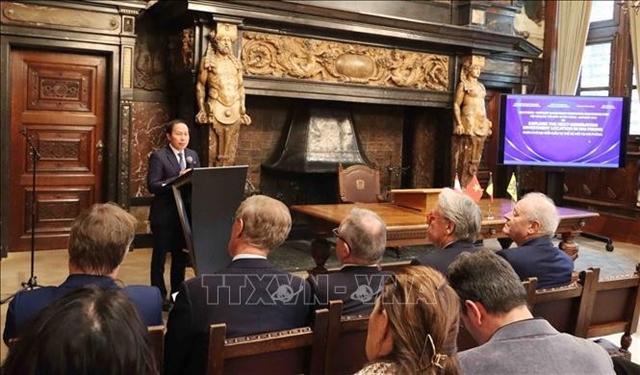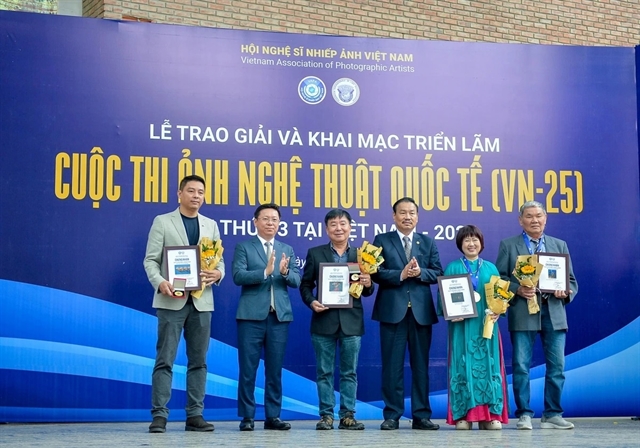 Life & Style
Life & Style

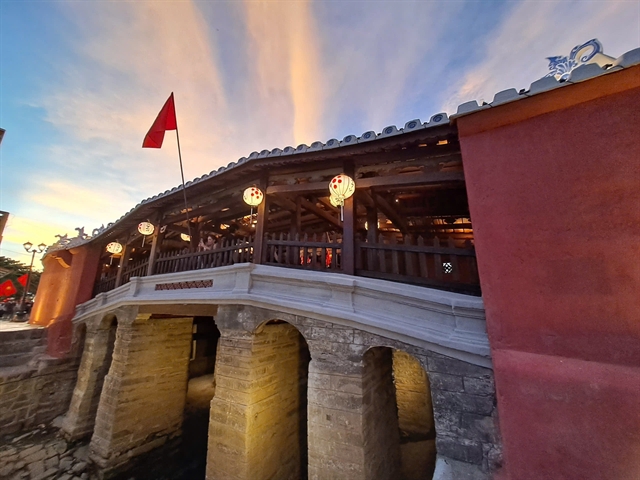
|
| Chùa Cầu, or the Japanese Covered Bridge, is an iconic bridge and architectural symbol of Hội An ancient town. The bridge were successfully restored by Vietnamese and Japanese experts following the restoration by Hội An City and the Japan International Cooperation Agency (JICA). VNS Photo Công Thành |
HỘI AN — The ancient town of Hội An has successfully preserved its UNESCO-recognised world heritage site, maintaining landscape protection, community engagement, eco-urban development, core zone planning and heritage expansion space for future growth.
Trần Đình Thành, an official from the Ministry of Culture, Sports and Tourism’s Department of Cultural Heritage, said at a review of the heritage preservation and protection plan for Hội An Town from 2012 to 2025 that the locality stands out as the only place in Việt Nam where the community actively participates in heritage restoration and promotion.
He added that the Old Quarter of Hội An, recognised as a world heritage site by UNESCO in 1999, has been fully restored in both the core zone and surrounding environment, meeting the strict requirements of world heritage management.

|
| A wedding couple check a lantern shop in Hội An ancient town. The world heritage site is decorated by lanterns every night. VNS Photo Công Thành |
“Hội An is seen as a rare urban area in Việt Nam where heritage preservation has maintained its architectural integrity and quality. The strict protection zone (the Old Quarter) and adjacent areas have been identified as untouched, while the buffer zone was designed for tourism and crafts development,” Thành said.
“The town has actively established a ‘green’ belt and heritage protection area in the buffer zone to support tourism-related and community-based services and trade. Hội An is also recognised as a typical heritage urban area in Việt Nam, with community involvement in heritage protection.”
Former Party Secretary of Hội An City Nguyễn Sự highly appreciated the cooperation of international experts in building Hội An as a world heritage site.
He also acknowledged the invaluable contributions of Polish archaeologist and architect Kazimierz Kwiatkowski, known as ‘Kazik’ (1944–1997), in promoting Hội An as a world heritage site, as well as Mỹ Sơn Sanctuary and the Complex of Huế Monuments.
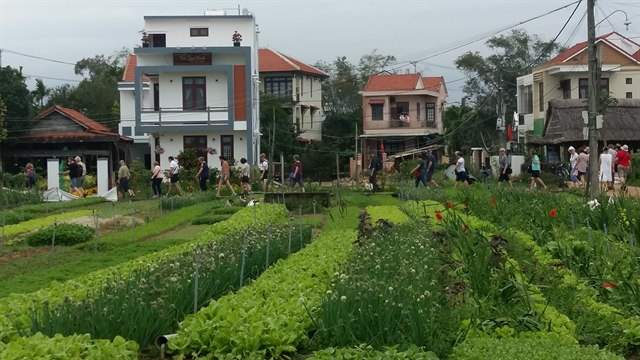
|
| Trà Quế vegetable garden in suburban of Hội An town offers an eco-tour service site in the town. Trà Quế village won as one of the Best Tourism Villages 2024. VNS Photo Công Thành |
Sự stressed that the management and restoration of Hội An had been cared for long before the town was recognised as a world heritage site, and that the Old Quarter and surrounding craft villages in suburban areas were naturally and culturally preserved in harmony with the local community’s livelihoods.
Vice chairwoman of Đà Nẵng City’s People’s Committee, Nguyễn Thị Anh Thi, emphasised that a long-term vision is needed to boost the heritage value of Hội An amid challenges from climate change, disasters, and the negative impacts of overtourism.
She said Hội An will continue restoration efforts and the promotion of eco-tourism services in a sustainable way to ensure the long-term preservation of the world heritage site.
Deputy director of Đà Nẵng City’s Culture, Sports and Tourism Department Hà Vỹ said Hội An was allocated a total fund of VNĐ300 billion (US$12 million) to preserve 75 projects, including 25 heritage sites such as old houses and pagodas.
The Old Quarter and other destination sites have welcomed 17.38 million tourists, including 14 million foreigners, generating VNĐ1.9 trillion ($76 million) in revenue.
Last year, Chùa Cầu, or the Japanese Covered Bridge, an iconic architectural symbol of Hội An, was successfully restored by Vietnamese and Japanese experts following an agreement on its restoration signed by Hội An City and the Japan International Cooperation Agency (JICA) in 2022.
Jonathan Wallace Baker, UNESCO Representative in Việt Nam, also joined the event with a video remark. He expressed UNESCO’s deep appreciation to the competent authorities of Việt Nam for their long-standing partnership and commitment to safeguarding this remarkable heritage site.
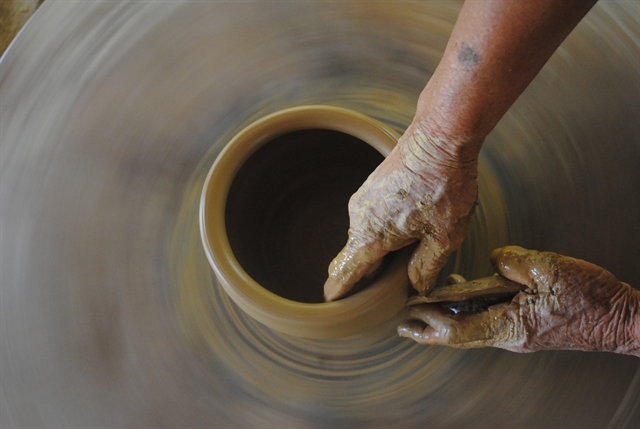
|
| Hands of a potter form a clay jar on a wheeler in Thanh Hà pottery village in Hội An. The town has a plenty of craft villages in the heritage buffer zone in boosting eco-tour service over past decades. VNS Photo Công Thành |
“Since its inscription on the World Heritage List in 1999, Hội An has been widely recognised as an outstanding example of a well-preserved historic port city that reflects centuries of cultural exchange between East and West," he said.
"It stands as a vivid example of a living heritage where communities continue to inhabit, use and transmit their traditions within the historic urban fabric. This strong community bond has long been the key to Hội An’s success and international reputation.
“As Việt Nam embarks on a new phase of administrative and territorial reform, Hội An faces a moment of transition that brings both opportunities and challenges. Integration into the greater Đà Nẵng urban framework opens unprecedented possibilities for regional cooperation, access to advanced planning capacities, disaster-risk reduction and climate adaptation.
"Yet this new context also calls for careful consideration to ensure that the integrity and authenticity of the heritage are not confined merely to the historic core, but understood and managed as part of a wider cultural landscape – the Thu Bồn River system, craft villages and natural surroundings that have shaped Hội An’s identity for centuries.”
He added that UNESCO welcomes the Government’s initiative to review and renew the zoning and management plan for 2025–35 in light of this evolving context.
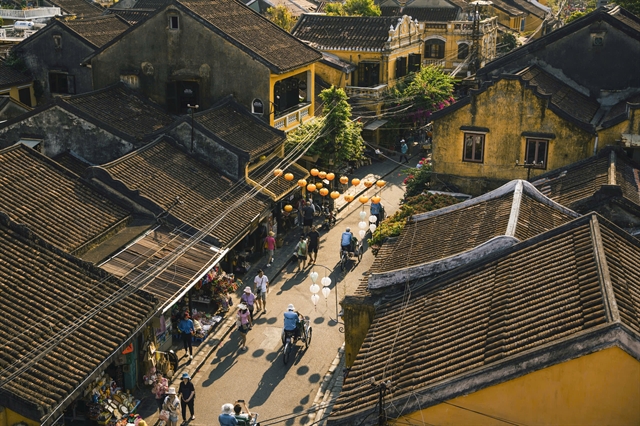
|
| A street in the Old Quarter zone of Hội An town. The world heritage site has more than 1,000 old houses and old architecture designs. It's one of the most favourite destinations in central Việt Nam. Photo courtesy of Hội An ancient town's preservation centre |
“We would recommend that this process be guided by the key UNESCO instruments and policies adopted by the international community in recent years, including the 2011 Recommendation on the Historic Urban Landscape (HUL), promoting an integrated and landscape-based approach to urban heritage management; the 2015 Policy on World Heritage and Sustainable Development, which places human well-being and equity at the centre of heritage conservation; and the MONDIACULT 2022 and 2025 Declarations, together with the Naples Declaration (2024), reaffirming culture as a global public good and the essential role of communities as the true custodians of heritage,” said Baker.
“UNESCO stands ready to accompany Việt Nam and the local authorities in this new chapter. We believe that the revised master plan can become a model for adaptive heritage management – one that balances development with conservation, strengthens disaster resilience and ensures that the benefits of heritage are shared fairly among all. Hội An has always been a bridge between cultures; it can now also be a bridge between heritage and sustainability, between local knowledge and modern governance.”
The ancient town has 1,439 relics and old houses, of which 80 per cent belong to the Old Quarter, built between 100 and 200 years ago.
Eight traditional festivals in the old town were recognised as national heritages, including the Mid-Autumn Full Moon Festival and the annual Nguyên Tiêu (full moon of lunar January) Festival, as well as Thanh Châu bird's nest, Thanh Hà Pottery Village, the carpentry trade of Kim Bồng Village and the Trà Quế vegetable garden.
In 2024, Trà Quế vegetable village was named one of the Best Tourism Villages at a UN Tourism vote in Colombia, while Cẩm Thanh village was also listed among the 50 most beautiful villages in the world for 2025 by the US’s Forbes Magazine.
Hội An City officially became a member of the UNESCO Creative Cities Network (UCCN) in the Crafts and Folk Art category in 2023.
New Đà Nẵng City (in merger with Quảng Nam Province) inherits the UNESCO-recognised world heritage sites of Hội An ancient town and Mỹ Sơn Sanctuary, and the World Biosphere Reserve site of Chàm Islands-Hội An.
To date, Hội An has received eight national heritage recognitions for many local attractions, including the annual Nguyên Tiêu Festival, Thanh Châu bird's nest, Thanh Hà Pottery Village, carpentry skills of Kim Bồng Village, vegetable crafts in Trà Quế Village, the Mid-Autumn Full Moon Festival, hammock weaving from the tree bark (Firmiana colorata) and the craft of making homes from bamboo and nipa palm. - VNS



